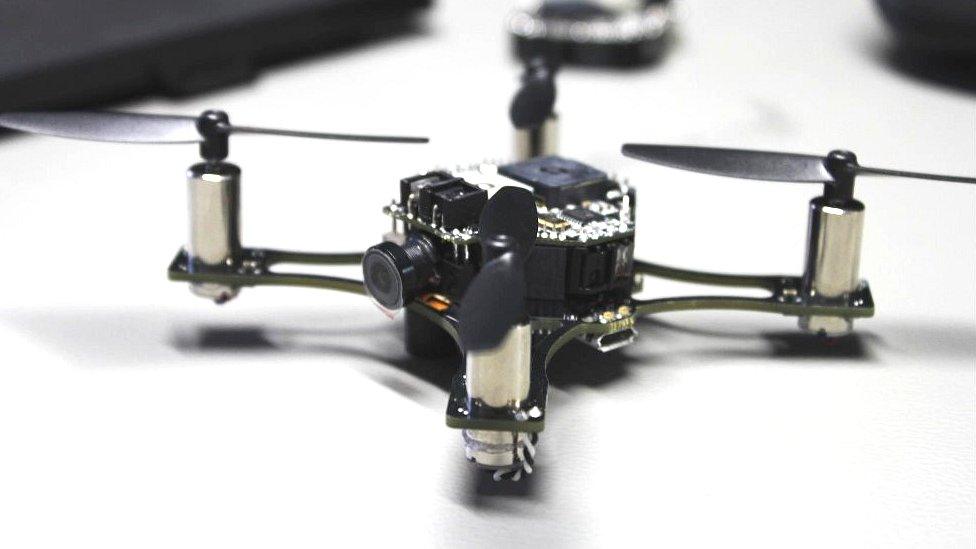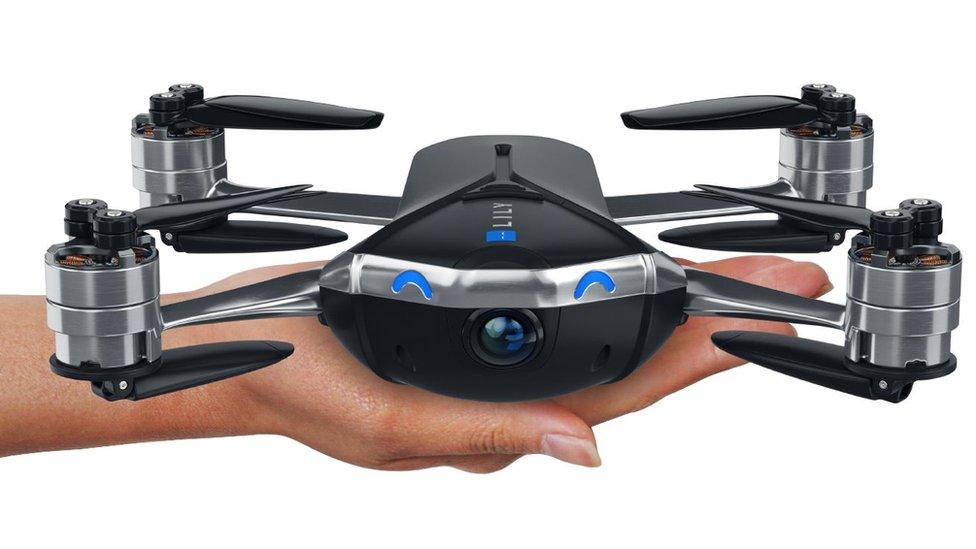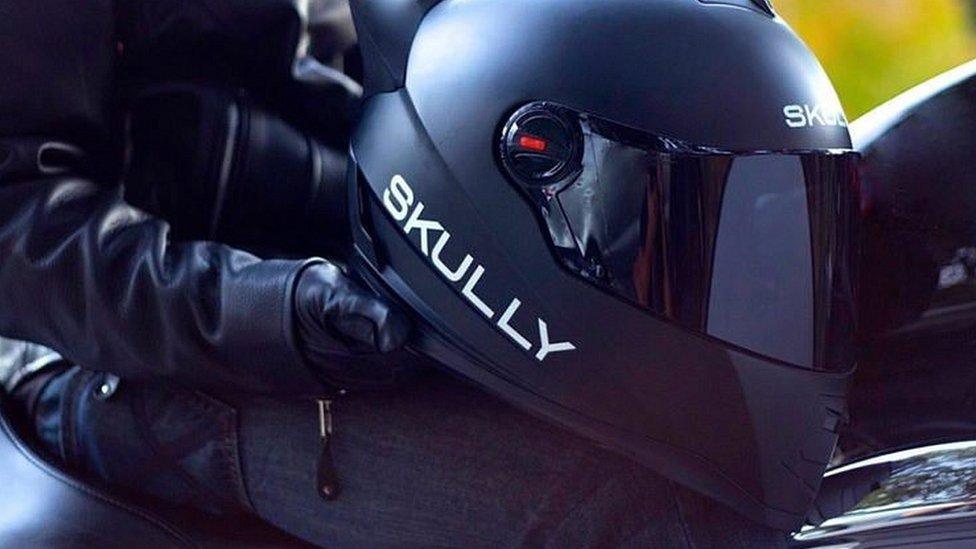CES 2018: Zano the zombie drone whirs back to life
- Published
- comments

One of the original Zano drones has had its firmware replaced to allow it to fly again at CES
A group of developers are attempting to revive the Zano drone - one of Kickstarter's most notorious failures.
The handheld quadcopter raised £2.3m from more than 12,000 backers on the crowdfunding platform before the project imploded in 2015.
The resulting scandal prompted a probe that, external found fault with all involved.
The Zano Camera project is one of several initiatives on show at the CES expo that make use of seized assets from failed crowdfunding campaigns.
The person leading the effort is Vernon Kerswell, chief executive of Extreme Fliers, a London-based micro drone manufacturer.
His company paid just over £100,000 to buy the assets of Zano's original developer - the Swansea, Wales-headquartered Torquing Group - after it collapsed.
"Zano was deeply flawed and there was a lot of issues with the software and the hardware, and that's ultimately why they never shipped [en masse]," he told the BBC at the Las Vegas trade show.
"But a lot of the technology was very interesting and way ahead of what else was out there at the time.
"Drone companies out there would never risk putting unproven technologies in their flagship products.
"But we can use it as a platform to test new ideas and build a group of passionate developers."
Rory tested the Zano drone ahead of its release
The project involves open-sourcing the intellectual property involved in the Zano drones, so that enthusiasts across the globe can work together to tackle the fact the limited number of units that made it into backers' hands are now effectively "undead".
"There are about 1,000 units out there that shipped but they were bricked when the company went bankrupt because the computer server that they were dependent on was switched off," explained Mr Kerswell.
If he receives enough support for the not-for-profit venture, he believes an app could be released as soon as April that could upload new firmware to the drones via wi-fi. This would allow them to be controlled by their users without the support of an external server.
If there is demand, Mr Kerswell also suggested further units could be manufactured.
But he said that changes to the hardware's design would be necessary first.
The arms of existing Zano drones, he explained, were too fragile meaning the rotor blades snapped off if they suffered a minor collision.
A downwards-facing camera should also be added, he said, to make it possible for the drones to fly on the spot.
In addition, he said different antennas and infrared sensors would be required to deliver the kind of range and obstacle-avoidance consumers now expected.
For now, the entrepreneur is able to demonstrate one of the original units flying again at CES's Eureka Park start-up zone, and he has launched a website where he promises to let the public track progress, external.
Second life
Another drone on show at CES has already been put on sale after returning from the dead.

The Lily Next Generation resembles the drone's original design
US-based Lily Robotics raised more than $34m (£25.1m) via its own website after publishing a YouTube video that showed its throw-and-go quadcopter, external - the Lily Camera - navigating its own flight path and surviving a dunk in water.
However, the company was wound down a year ago after it said it had failed to secure further funds from investors.
Its assets were subsequently acquired by another Californian firm, Mota, which released the Lily Next Generation drone late last year, albeit without the waterproofing originally promised.
"We think the worldwide brand awareness far outweighs any risk," a spokesman said about retaining Lily's name.
"We launched... in October 2017, and it's been selling very well since."

The makers of the Skully Fenix AR say the headset will deliver improved specs over the original design
Skully Technologies is also at the trade fair with a hi-tech "intelligent" motorcycle helmet based on the work of a failed $2.4m Indiegogo campaign.
The Skully Fenix AR promises users a heads-up display, a blindspot camera and hands-free phone calls among other features.
The Atlanta, Georgia-based company used the show to announce that the product should be ready to go on sale in the summer.
It has pledged to give some units away to the project's original backers even though it says it has not formal obligation to do so.
- Published20 January 2016
- Published11 November 2015
- Published27 August 2015